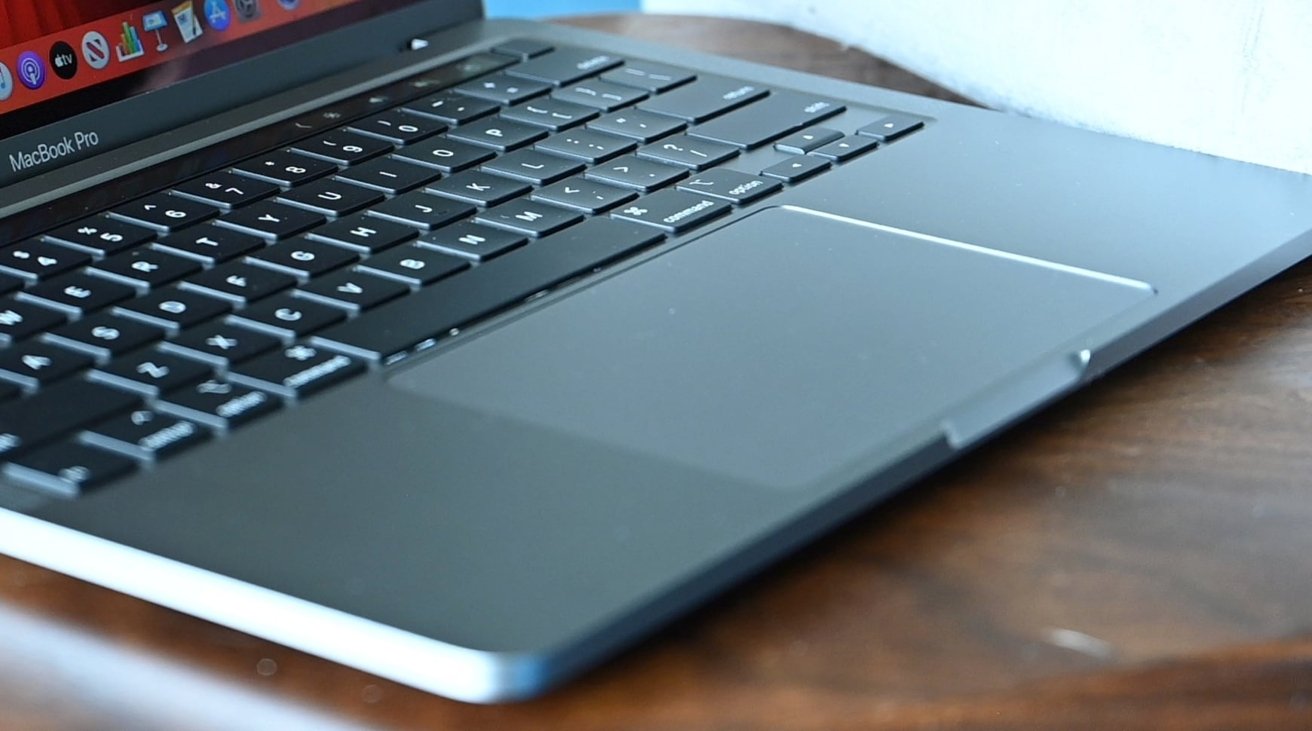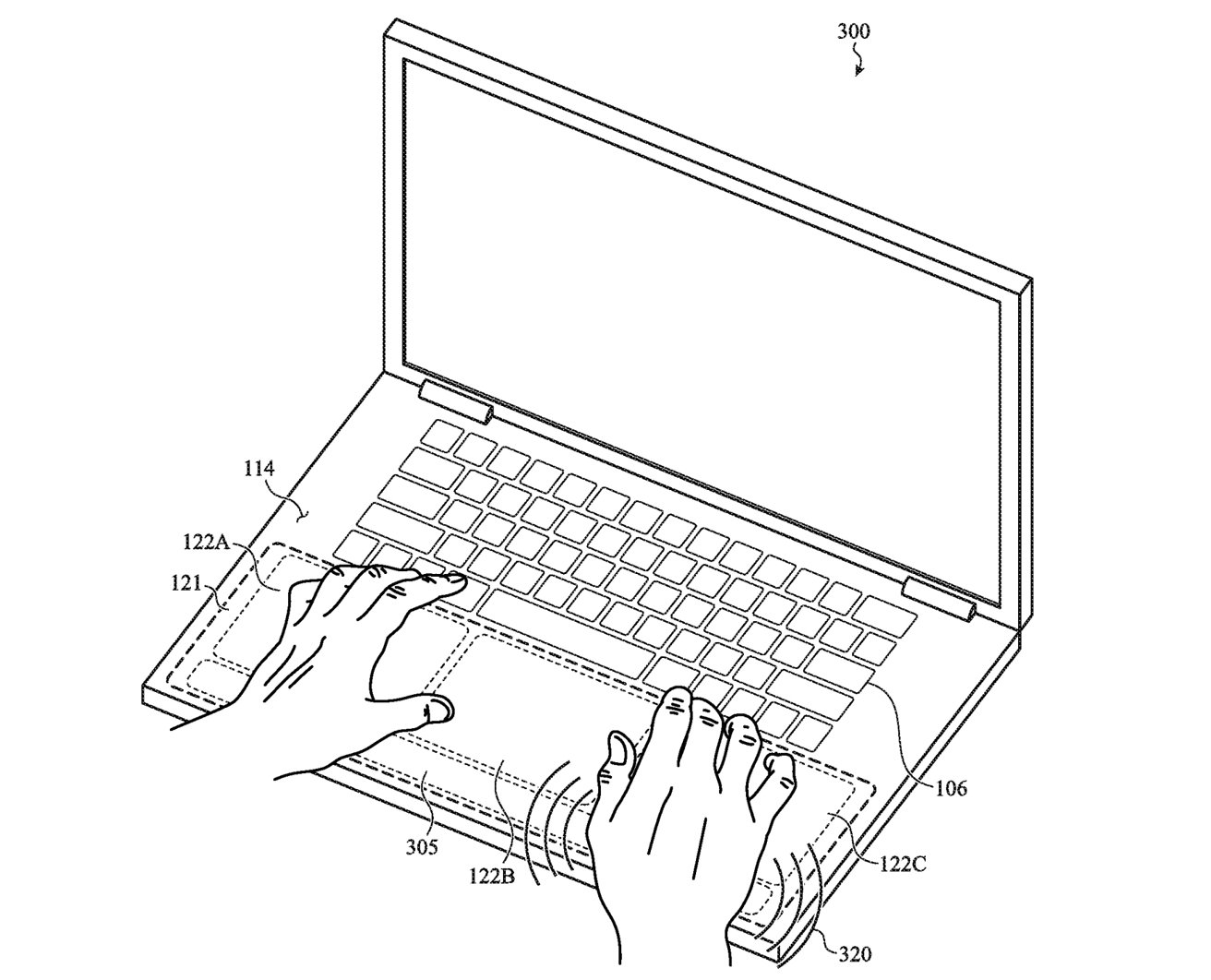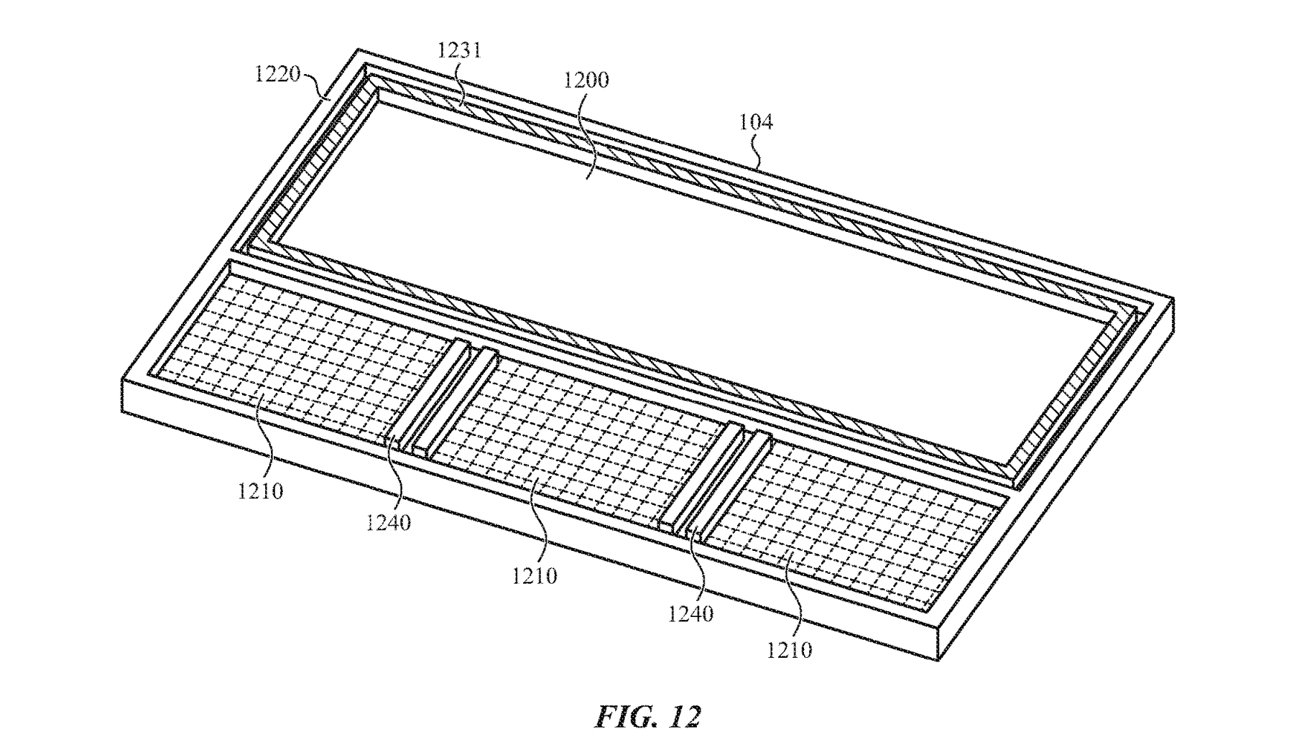Apple could add haptic feedback for notifications in the MacBook Pro and other portable Macs in the future, with discrete regions of the chassis around the trackpad able to channel vibrations to the user's hands and wrists.
Haptic Feedback is a very common element of mobile computing, with iPhones and the Apple Watch using it, alongside many other devices on the market. The idea of haptic feedback is to notify the user of an event via movement instead of sound or a visual cue, which is handy in situations where users have to be quiet and not disturb others.
While small mobile devices have used the concept for years, the same cannot be said about larger hardware. Outside of game controllers and other specialized peripherals, haptic feedback isn't generally used in notebooks or desktop computing at all.
For the MacBook Pro, Apple does employ its Taptic engine to register a "click" in the Trackpad, but doesn't use it for notification purposes.
In a patent granted to Apple by the US Patent and Trademark Office on Tuesday titled "Laptop computing device with discrete haptic regions," that may change in the future for MacBook Users.
However, while haptic feedback for a mobile device is simple and generally affects the entire body of an iPhone or a small device, the same thing cannot be done for a MacBook. Vibrating the entire casing is impractical for such a large object.
Instead, Apple suggests the haptic feedback could be limited to specific regions of the casing. Furthermore, nearby areas without haptics should ideally be unaffected, so users only are aware of haptic feedback if they are in contact with the designated regions.
Depending on the configuration, this could be as distinct as making a trackpad offer haptic feedback, but the immediate surrounding area does not. Apple could also designate multiple regions of the lower enclosure to offer localized haptic feedback, with each region operating independently depending on the required configuration.
As well as the trackpad, the regions to the left and right could be their own designated haptic areas, as well as the wrist rest of a MacBook. To service these areas, an array of haptic feedback-related components could be laid across the lower portion, to give granular haptic coverage.
While not as immediately useful, the screen portion of the MacBook could also have haptic areas around the bezel. This could be useful for alternative input systems not currently offered, such as a touchscreen.
To accomplish this, Apple suggests the top case of the lower MacBook enclosure could house haptic actuators to directly vibrate or deform the casing. "Linear reluctance actuators" are specified as one possible actuation technology Apple could employ for the system.
In order to separate out the haptic regions, Apple suggests the casing could include additional stiffeners at the boundaries. This is intended to minimize and deaden the effects of vibrations as they reach the edge of their designated area, minimizing their effects in other parts.
Originally filed on January 30, 2019, the patent lists its inventors as Keith J. Hendren, Dinesh C. Mathew, Bryan W. Posner, Denis H. Endisch, Alex J. Lehmann, and Robert Y. Cao.
Apple files numerous patent applications on a weekly basis, revealing areas of interest for its research and development teams. However, there's no guarantee the ideas will appear in a future product or service.
Haptics has been a repeated research area to appear in patent filings for Apple. For example, the 2019 patent for a "Keyless Keyboard" uses haptics and a display to provide haptic feedback when the user types, to mimic a physical key.
The same concept was also raised in October, using a deformable touchscreen keyboard to give more physical presence to the software keys. Haptics also appeared in August 2018 filings, with regions around a keyboard and the keys themselves providing a touchpad-like experience, complete with vibrations.
Apple has also considered adding screens to the trackpad, providing a Touch Bar-style experience.
Haptic research hasn't been limited to the MacBook lineup. Some patents have surfaced suggesting how haptics could be added to the Apple Pencil, but doing so in such a way as to not interfere with the user's drawing or writing activity.
 Malcolm Owen
Malcolm Owen









-m.jpg)






 Christine McKee
Christine McKee

 Marko Zivkovic
Marko Zivkovic

 Andrew Orr
Andrew Orr
 Andrew O'Hara
Andrew O'Hara
 William Gallagher
William Gallagher




-m.jpg)



2 Comments
I’m surprised the article fails to mention that the Force Touch trackpad itself uses haptic feedback for the click mechanism. Underneath the trackpad is the biggest Taptic Engine- bigger than the ones in iPhone.